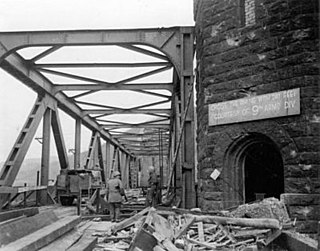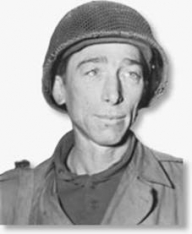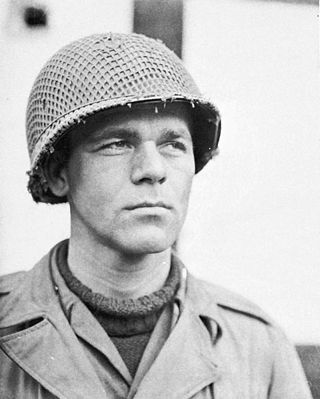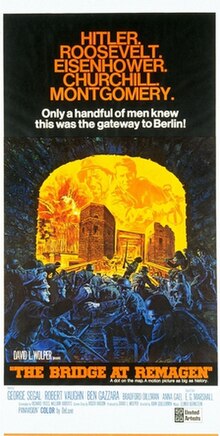
The Prague Spring was a period of political liberalization and mass protest in the Czechoslovak Socialist Republic. It began on 5 January 1968, when reformist Alexander Dubček was elected First Secretary of the Communist Party of Czechoslovakia (KSČ), and continued until 21 August 1968, when the Soviet Union and most Warsaw Pact members invaded the country to suppress the reforms.

Robert Francis Vaughn was an American actor and political activist, whose career in film, television and theatre spanned nearly six decades. He was a Primetime Emmy Award winner, a four-time Golden Globe Award, an Academy Award, and a BAFTA Award nominee.

Remagen is a town in Germany in the state of Rhineland-Palatinate, in the district of Ahrweiler. It is about a one-hour drive from Cologne, just south of Bonn, the former West German seat of government. It is situated on the left (western) bank of the river Rhine. There is a ferry across the Rhine from Remagen every 10–15 minutes in the summer. Remagen has many notable and well-maintained buildings, churches, castles and monuments. It also has a sizeable pedestrian zone with plenty of shops.

The Slánský trial was a 1952 antisemitic show trial against fourteen members of the Communist Party of Czechoslovakia (KSČ), including many high-ranking officials. Several charges, including high treason, were announced against the group on the grounds of allegedly conspiring against the Czechoslovak Republic. General Secretary of the KSČ Rudolf Slánský was the alleged leader of the conspirators.

Biagio Anthony "Ben" Gazzara was an American actor and director of film, stage, and television. He received numerous accolades, including a Primetime Emmy Award and a Drama Desk Award, in addition to nominations for three Golden Globe Awards and three Tony Awards.

Kenneth William Hechler was an American politician. A member of the Democratic Party, he represented West Virginia's 4th congressional district in the U.S. House of Representatives from 1959 to 1977 and was West Virginia Secretary of State from 1985 to 2001.

The Ludendorff Bridge was a bridge across the river Rhine in Germany which was captured by United States Army forces in early March 1945 during the Battle of Remagen, in the closing weeks of World War II, when it was one of the few remaining bridges in the region and therefore a critical strategic point. Built during World War I to help deliver reinforcements and supplies to German troops on the Western Front, it connected Remagen on the west bank and the village of Erpel on the east bank between two hills flanking the river.

Ivan Passer was a Czech film director and screenwriter, best known for his involvement in the Czechoslovak New Wave and for directing American films such as Born to Win (1971), Cutter's Way (1981) and Stalin (1992).

Operation Lumberjack was a military operation with the goal of capturing the west bank of the Rhine River and seizing key German cities, near the end of World War II in Europe. The First United States Army launched the operation in March 1945 to capture strategic cities in Nazi Germany and to give the Allies a foothold along the Rhine.

The Devil's Brigade is a 1968 American DeLuxe Color war film filmed in Panavision, based on the 1966 book of the same name co-written by American novelist and historian Robert H. Adleman and Col. George Walton, a member of the brigade.

Olga Fikotová was a Czechoslovak and later American discus thrower. She is best known for winning gold at the 1956 Melbourne Olympics and for her romance across Cold War barriers with American hammer gold medalist Hal Connolly.

The Grand Hotel International Prague is a four-star hotel located in the Dejvice quarter of Prague, in the Czech Republic. It was completed in 1956 in the socialist realism style, and is a Czech cultural monument. The hotel has retained much of its original interior artwork, contains 278 guest rooms, and was originally designed as a military hotel before public use as a luxury hotel. It has previously operated under the names Hotel Družba, Hotel Čedok, Hotel Holiday Inn and Hotel Crowne Plaza.

The Battle of Remagen was an 18-day battle during the Allied invasion of Germany in World War II. It lasted from 7 to 25 March 1945 when American forces unexpectedly captured the Ludendorff Bridge over the Rhine intact. They were able to hold it against German opposition and build additional temporary crossings. The presence of a bridgehead across the Rhine advanced by three weeks the Western Allies' planned crossing of the Rhine into the German interior.

Sgt. Alexander Albert Drabik was the first American soldier to cross the Ludendorff Bridge over the Rhine river at Remagen, Germany in World War II during the Battle of Remagen. He led two other enlisted men across the bridge, running 398 metres (1,306 ft) while under fire, knowing that the demolition charges attached to the bridge could be detonated at any moment. He was awarded the Distinguished Service Cross for his action.

On 20–21 August 1968, the Czechoslovak Socialist Republic was jointly invaded by four Warsaw Pact countries: the Soviet Union, the Polish People's Republic, the People's Republic of Bulgaria and the Hungarian People's Republic. The invasion stopped Alexander Dubček's Prague Spring liberalisation reforms and strengthened the authoritarian wing of the Communist Party of Czechoslovakia (KSČ).

John Guillermin was a French-British film director, writer and producer who was most active in big-budget, action-adventure films throughout his lengthy career.

David Lloyd Wolper was an American television and film producer, responsible for shows such as Roots, The Thorn Birds, and North and South, and the theatrically-released films Willy Wonka & the Chocolate Factory (1971) and L.A. Confidential. He was awarded the Jean Hersholt Humanitarian Award at the 57th Academy Awards in 1985 for his work producing the opening and closing ceremonies of the 1984 Summer Olympics in Los Angeles, as well as helping to bring the games there. His 1971 film about the study of insects, The Hellstrom Chronicle, won an Academy Award.

Karl Heinrich Timmermann was an American soldier and army officer.
First Lieutenant John Grimball of Charleston, South Carolina, a young lawyer from Columbia, South Carolina, was commanding officer of Company A, 14th Tank Battalion during the battle to capture the Ludendorff Bridge over the Rhine on March 7, 1945. In the battle for the bridge over the Rhine, he led an understrength platoon of four of the newest heavy-duty T26E3 M26 Pershing tanks. Under his leadership, his unit played an instrumental role in capturing the last intact bridge across the Rhine, the only one of 22 road and 25 railroad bridges across the Rhine that the Germans had not yet blown up.

Relations between Czechoslovakia and the United States refer to two periods in Czechoslovakia's history. The first being the establishment of Czechoslovakia after its declaration of independence in 1918 from Austria-Hungary initiated by President Woodrow Wilson as part of his Fourteen Points following World War I. The second period being the communist era from 1948 when relations were strained, until 1992 when Czechoslovakia split forming the independent nations of the Czech Republic and Slovakia as a result of the 1989 Velvet Revolution.



















